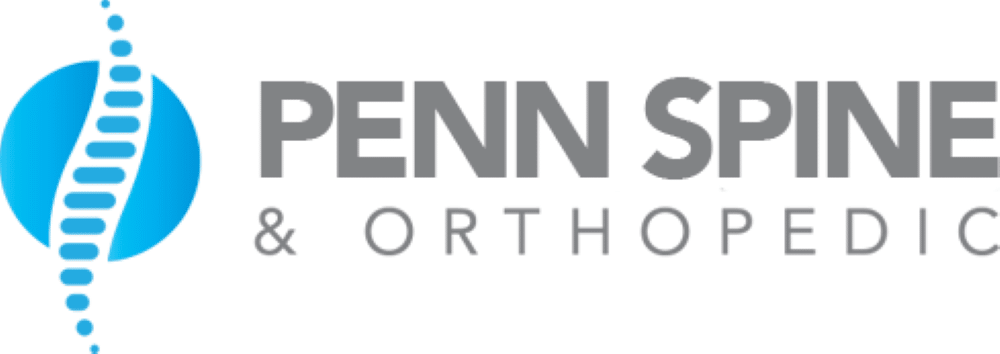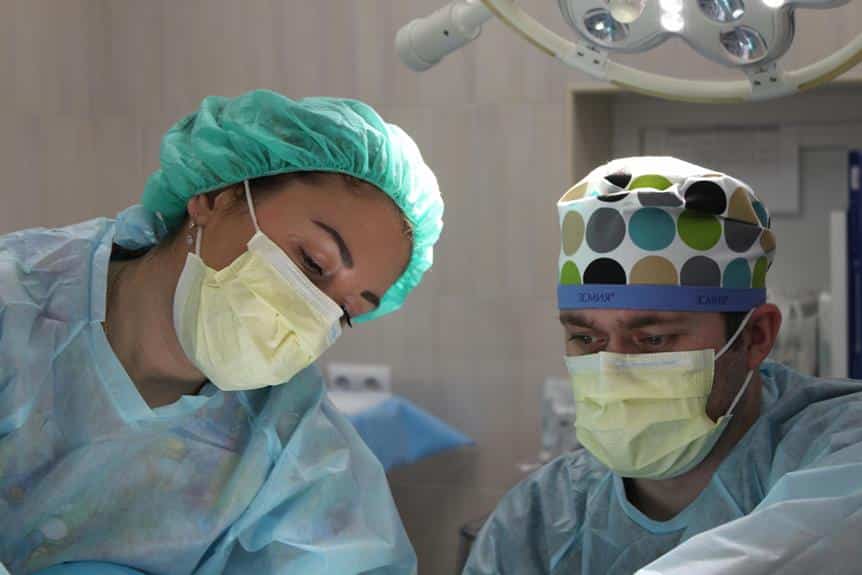Corpectomy, a surgical procedure performed by neurosurgeons or orthopedic surgeons, involves removing a vertebral body to alleviate spinal cord or nerve root compression. This surgery is indicated for patients with severe spinal compression from tumors, fractures, infections, or degenerative diseases. It provides significant pain relief and mobility enhancement. The complexity of the procedure influences the cost. Understanding the procedural steps, recovery time, potential risks, and success evaluation methods is crucial for optimal outcomes.
Understanding Corpectomy Surgery
Corpectomy surgery, a precise vertebral body removal procedure, relieves spinal cord or nerve root pressure. It's chosen when less invasive options fail. Alternatives like laminectomy and discectomy might be less effective in severe cases. The cost of Corpectomy varies by condition complexity, surgical tools needed, and location. Performed by trained neurosurgeons or orthopedic surgeons, its high cost is often justified by significant benefits like enhanced mobility and pain reduction, thus improving patient quality of life.
Indications for Corpectomy
Corpectomy is indicated for severe spinal cord compression from tumors, fractures, infections, or degenerative diseases like spondylosis and spinal stenosis. This surgery aims to decompress neural elements and restore spinal stability, typically pursued after conservative treatments fail or when severe pain, neurological deficits, or instability severely impair quality of life. Alternatives such as discectomy, laminectomy, or spinal fusion may be considered for patients with contraindications like obesity, systemic diseases, or severe osteoporosis. A thorough risk-benefit analysis and patient assessment precede the decision for corpectomy to ensure informed consent and appropriate surgical strategy.
Pre-Surgery Preparations
Prior to corpectomy, patients must adhere to prescribed dietary and emotional guidelines to enhance surgical outcomes and minimize complications. Diet adjustments, initiated one week before surgery, involve low sugar, sodium, and saturated fats intake to decrease inflammation and accelerate healing. Fasting is mandated pre-surgery to reduce aspiration risks during anesthesia.
Emotional readiness is critical. Detailed information about the corpectomy's risks and benefits is provided to reduce patient anxiety and promote positivity. Practices such as meditation or light exercise and support from family or mental health professionals are recommended for emotional stabilization.
Additional pre-surgery preparations include maintaining a smoke-free environment, regular exercise, and proper hydration. Required preoperative assessments encompass blood tests, spinal imaging, and cardiovascular evaluations to confirm optimal physical health before the procedure. These comprehensive preparations are crucial for a successful surgery and recovery.
Step-by-step Surgical Procedure
Corpectomy begins with general anesthesia administration, ensuring patient comfort. An anesthesiologist plans and monitors anesthesia, observing vital signs and consciousness levels.
The surgical team positions the patient for optimal access to the operation site. Sterilized instruments, including scalpels, drills, curettes, rongeurs, and microdissectors, are prepared.
A precise incision is made to expose vertebral bodies. Using specialized tools and a high-speed drill, the surgeon removes the problematic vertebral body during corpectomy.
Intervertebral discs adjacent to the excised vertebra are removed to accommodate spinal fusion. A graft or implant is placed in this space for spinal stabilization. Screws, rods, or plates secure the fusion construct.
Post-surgery, the incision is sutured, and the patient transfers to recovery.
Types of Corpectomy Surgeries
Corpectomy surgeries, crucial for relieving spinal cord or nerve root pressure, fall into two primary categories: Anterior Cervical Corpectomy and Thoracic or Lumbar Corpectomy. Anterior Cervical Corpectomy targets conditions in the neck, often due to herniated discs or spinal stenosis. Thoracic or Lumbar Corpectomy, also known as dorsal corpectomy, addresses issues in the chest and lower back, such as fractures, infections, or tumors.
Corpectomy costs vary based on surgical complexity, location, and insurance. Alternative treatments like physical therapy, pain medication, or spinal injections may be considered for less severe conditions or unsuitable candidates for surgery.
Post-Operative Care
Post-operative care after corpectomy surgery focuses on nutrition, emotional support, and physical rehabilitation to ensure recovery and reduce complications. Nutritionally, a diet rich in proteins, vitamins, and minerals, tailored by a registered dietitian, supports tissue repair and immune function. Emotional support, involving family, friends, and mental health professionals, addresses psychological distress from pain and limited mobility. Physical therapists guide through a progressive exercise regimen to restore mobility and manage symptoms. Each aspect—nutrition, emotional, and physical support—is crucial for successful recovery.
Pain Management Strategies
Effective pain management after corpectomy surgery integrates pharmacological and non-pharmacological methods, and educates patients. Key pharmacological treatments include opioids like morphine and oxycodone, which bind to brain and spinal cord receptors to reduce pain signals. Due to risks of addiction and tolerance, these require careful monitoring and adjustment. Non-opioid alternatives, such as NSAIDs and acetaminophen, offer additional pain relief options. Complementary non-pharmacological treatments like acupuncture, massage, and biofeedback enhance natural pain relief and promote relaxation, optimizing overall pain management effectiveness.
Physical Rehabilitation Process
Post-corpectomy rehabilitation focuses on a tailored exercise regime to enhance strength and flexibility. Continuous monitoring assesses regime effectiveness and informs necessary adjustments.
Post-Surgery Exercise Regime
Is a structured exercise regime essential for physical rehabilitation post-corpectomy surgery? Absolutely.
- Exercise Types: Incorporating low-impact cardio, strength-building, and flexibility exercises aids in recovery and function restoration.
- Nutrition: Proper nutrition supports healing and meets increased energy demands.
- Progression: Exercises should start gently and intensity should increase as the patient's condition improves.
- Rest: Regular rest periods are crucial for healing and preventing overexertion.
- Professional Guidance: Rehabilitation experts ensure correct exercise execution and adjustments for optimal recovery.
Monitoring Rehabilitation Progress
To ensure optimal recovery post-surgery, monitoring rehabilitation progress is crucial. The patient adheres to a prescribed exercise regimen, utilizing advanced rehabilitation equipment and alternative therapies tailored to individual recovery goals.
Rehabilitation equipment such as ergometers and balance boards quantitatively assess muscle strength, balance, and functional mobility. Regular evaluations pinpoint areas needing attention. Isokinetic dynamometry, for example, specifically measures and provides feedback on muscle strength.
Alternative therapies like hydrotherapy and acupuncture support traditional rehabilitation methods. Hydrotherapy enhances cardiovascular stamina, muscle strength, joint flexibility, and reduces pain and inflammation. Acupuncture alleviates pain and boosts wellness.
The primary objective is to meticulously track and adapt the rehabilitation plan based on the patient's progress and response to therapy, ensuring a successful recovery trajectory. A personalized, dynamically adjusted rehabilitation program maximizes the benefits of corpectomy surgery, facilitating excellent recovery outcomes.
Expected Recovery Timeline
Corpectomy recovery spans three phases: initial, mid-recovery, and long-term. Each phase features unique physiological responses and recovery milestones, demanding tailored therapeutic interventions. Understanding this timeline is crucial for optimal patient management and setting realistic recovery expectations.
Initial Post-Surgery Period
Post-corpectomy recovery spans weeks, influenced by health, surgery scope, and healing rate. It's vital for both physical and emotional recuperation.
Emotions range from relief to depression, necessitating robust support systems including family, therapists, and groups.
Key recovery considerations:
- Regular check-ups ensure healing and prevent complications.
- Gradual activity reintroduction avoids strain on the surgical area.
- Effective pain management employs medications and relaxation techniques.
- Emotional support addresses surgery's psychological impacts.
- Nutritional support enhances healing.
Recovery timelines vary by individual health and surgery results. Patients must consult healthcare providers to customize recovery plans.
Mid-Recovery Phase
In the mid-recovery phase, spanning three weeks to six months post-surgery, patients typically notice marked improvements in health and wound healing. This phase involves gradual strength recovery and a cautious return to daily activities, tailored to individual progress.
Emotional recovery is crucial during this period, often featuring emotions ranging from relief to anxiety about potential complications. A multidisciplinary team, including psychologists and psychiatric nurses, conducts targeted counseling sessions utilizing cognitive-behavioral therapy and stress management to boost coping skills and resilience.
Furthermore, the surgical wound's appearance enhances significantly, with the removal of sutures or staples when applicable. Regular follow-ups are essential to monitor neurological functions, evaluate pain, and adjust medications as needed.
Long-Term Healing Process
Corpectomy surgery's long-term healing, spanning six to twelve months, involves phased recovery in function, pain management, and health. Key elements include:
- Gradual functional ability and mobility restoration.
- Ongoing pain management, reducing medication over time.
- Regular spinal stability and healing check-ups.
- Emotional and mental health support, aiding coping with surgery-related stress.
This integrated recovery approach balances physical, emotional, and mental health post-corpectomy.
Possible Risks and Complications
Corpectomy surgery risks include infection, bleeding, nerve damage, spinal cord injury, and anesthesia complications. Infections, while rare, may escalate treatment costs and complications. Bleeding can cause neurological deficits. Nerve damage near critical neural structures might lead to paralysis or loss of motor control. Spinal cord injuries, though rare, could result in permanent disability. Anesthesia risks cover allergic reactions and respiratory issues, typically covered by insurance. Patients must evaluate these risks against surgery benefits, considering health status and insurance coverage before proceeding with corpectomy.
Assessing Surgical Success
Corpectomy surgery success is gauged by two metrics: post-operative healing and functional improvement. Post-operative healing involves patient recovery, including surgical site healing and avoiding complications like infection. Functional improvement focuses on restored abilities and life quality enhancements, such as increased mobility, pain reduction, and normal activity resumption.
Evaluating Post-Operative Healing
Post-operative evaluation of corpectomy surgery emphasizes patient recovery, focusing on spinal alignment restoration, symptom relief, and functional status improvement. Key aspects include:
- Monitoring wound healing and infection signs.
- Assessing adherence to prescribed protein-rich healing diet.
- Evaluating emotional recovery, offering support for stress and anxiety.
- Checking spinal alignment restoration.
- Monitoring symptom relief post-surgery.
Measuring Functional Improvement
Evaluating functional improvement after corpectomy surgery is crucial for assessing both short-term and long-term outcomes in patient mobility and daily activities. This evaluation utilizes objective measures, such as physical exams, radiological tests, and muscle strength assessments, to quantitatively gauge post-surgery physical progress. Subjective measures, including patient-reported outcome measures (PROMs), capture perceived physical function and quality of life, reflecting patient satisfaction—a key indicator of surgical success. Additionally, comparing these outcomes with non-surgical treatments helps clinicians determine the most effective management for spinal conditions. Thus, consistent measurement of functional improvement is essential for comprehensive post-operative care.
Life After Corpectomy Surgery
Adjusting to life post-corpectomy involves a supervised rehabilitation focusing on mobility enhancement and pain management. Mental health is crucial as recovery can be mentally taxing due to lifestyle adjustments and physical restrictions. Sharing personal experiences provides valuable emotional support and insights.
Key recovery aspects include:
- Mobility Improvement: Post-surgery, prescribed physiotherapy exercises help restore strength and mobility.
- Pain Management: Effective pain control requires medication and therapeutic interventions.
- Mental Health Support: Psychological counseling aids in managing emotional distress or anxiety after surgery.
- Lifestyle Modifications: Dietary, exercise, and routine adjustments accommodate the new physical condition.
- Regular Check-ups: Continuous medical evaluations ensure recovery tracking and complication prevention.
Frequently Asked Questions
Does Health Insurance Typically Cover Corpectomy Surgery?
Health insurance typically covers corpectomy surgery, contingent on the policy's terms. Verify coverage specifics with your insurer.
Are There Alternative Treatments to Corpectomy Surgery?
Yes, alternatives to corpectomy include physical therapy, pain management, and non-surgical spinal decompression, chosen based on condition severity, potential complications, and care needs post-operation.
How Does Corpectomy Surgery Impact Daily Life Activities?
Corpectomy surgery affects daily life; post-surgery, patients often need physical therapy for strength recovery and pain management for comfort enhancement. Impact varies by individual health and resilience.
What Is the Success Rate of Corpectomy Surgery Globally?
Corpectomy surgery globally shows high success rates. Most patients achieve normal functionality post-surgery, although outcomes may vary with health status and surgical complexity.
Is It Possible to Perform Corpectomy Surgery Remotely?
Remote corpectomy surgery is currently unfeasible due to connectivity and latency issues, impacting the precision required for such complex procedures.

